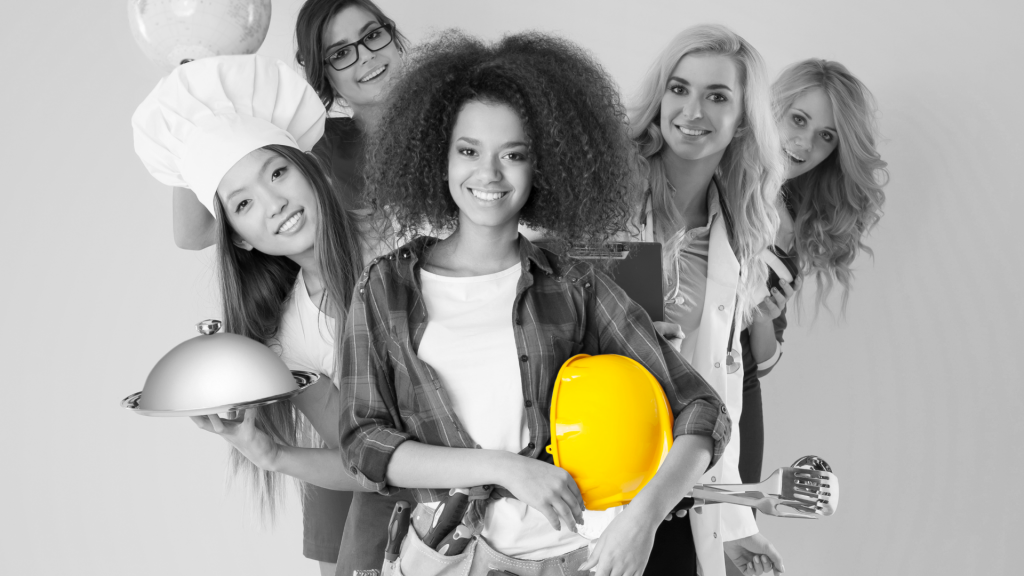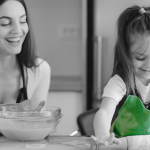Once, when I went to the Netherlands to visit a friend, I was unexpectedly taken by him to a birthday party of a close friend of his. I must admit that I was curious how such a party would look in Holland, but at the same time I was extremely stressed.
First of all, I was going to a party with strangers, not to mention Dutch people, and secondly, my Dutch wasn’t good enough to hold a conversation with someone. I imagined a few scenarios that could happen at this party, and each of them involved me having to undertake some sort of interaction with the birthday person and the hosts of the house.
To make the situation worse, there is a custom in the Netherlands that when you attend someone’s birthday party, you give good wishes to not only the birthday person, but their entire family. The situation started to feel more and more stressful. Greetings, congratulations and farewells might seem to be basic and uncomplicated elements of learning a language, but if you don’t master them fully, you can come across as rude. And yet, you don’t travel abroad to avoid talking to people.
In this article, I’ll try to introduce you to the basic polite phrases and sentences that will make such situations less stressful, so that you won’t have problems choosing the right greeting while in the Netherlands.
- Dutch greetings
- How to say goodbye in Dutch
- How to say “Thank you” in Dutch (and other courtesy phrases)
- How to say “Nice to meet you” in Dutch (and other phrases to start a conversation)
- Congratulations and birthday wishes in Dutch (and other useful phrases)
- How to say “I love you” in Dutch
- How to write an email or letter in Dutch
- The best way to learn common Dutch phrases
Dutch greetings
As in any language, greetings are divided into formal ones – aimed at older people and strangers – and informal ones, which we address to our friends or family. Here are the most commonly used greetings:
- Hallo (meaning “hello”)
The most universal greeting. We can associate it with the English “hello”, which can occur in formal or informal situations.
- Hoi (meaning “Hi”)
This greeting is informal and used mainly with acquaintances.
- Goedemorgen (meaning “good morning”)
A formal greeting. It literally means “good morning”, so we use it until 12:00, when the time of day can still be called morning.
- Goedemiddag (meaning “good afternoon”)
A formal greeting used at midday, which according to the Dutch is between 12:00 and 18:00.
- Goedenavond (meaning “good evening”)
A formal greeting used after 6 p.m.
How to say goodbye in Dutch
- Dag (meaning “bye”)
This is a universal farewell that can also be used as a greeting, regardless of the time of day.
- Tot ziens (meaning “see you later”)
Can be used formally, for example when saying goodbye to co-workers or leaving a restaurant.
- Doei or Doeg (meaning “bye”)
More informal. Used in the company of our friends or relatives.
How to say “Thank you” in Dutch (and other courtesy phrases)
We will use these phrases frequently because, as you know, just visiting a shop involves “good morning”, “thank you” and “goodbye”.
- Dank je/u wel (meaning “thank you very much”)
We can shorten this phrase by omitting the “wel”. Remember that “u” is a polite form while “je” is informal.
- Bedankt (meaning “thank you”)
Less formal. Most frequently used.
For saying “please” Dutch people use the following:
- Alstublieft (used in more formal context, everyone you have not met before or don’t know as a friend, in shops, restaurants, with friends of friends, in the tram or train, police etc.)
- Alsjeblieft (used in informal context for friends of the same age or children)
We can use this in two contexts. The first is when we ask for something, for example in a restaurant:
- Mag ik een glas water, alstublieft? – Can I ask for a glass of water?
This form can also be used by the waiter who serves the water to us:
- Uw water, alstublieft. – Please, your water.
In order to apologize, use:
- Pardon (meaning “excuse me”)
More universal.
- Sorry (meaning “sorry”)
Informal. Can be used, for example, when you accidentally push someone in a shop.
- Meneer – Mr, sir
- Mevrouw – Miss, ma’am
Formal to address an older person or a stranger.
How to say “Nice to meet you” in Dutch (and other phrases to start a conversation)
Once you have said “hello” to someone, a good way to start a conversation is to ask that person, “How are you doing?”. Here are some phrases you can use in this situation and some answers you can give if someone asks you this question.
- Hoe gaat het met u? – How are you?
This phrase is formal unless you subtract “met u” or replace “u” with “je”:
- Hoe gaat het? / Hoe gaat het met je? – How is it going? How are you?
- Tijd niet gezien. – We haven’t seen each other for a long time.
We only use these with family or friends.
- Hoe gaat het met alles? – How’s it going?”
This question can be asked in the context of work or an activity or in general.
- Alles goed? – Is everything all right?
- Het is goed om je weer te zien. – Nice to see you again.
Answers:
- Goed – Good
- Heel goed – Very good
- Het gaat – It’s going OK
- Slecht – Bad
- Ik ben moe – I am tired
- Graag gedaan – You are welcome
The answer when someone thanks us for something.
- Aangenaam (kennis te maken) – Nice to meet you.
Congratulations and birthday wishes in Dutch (and other useful phrases)
At this point, I’m going to show you how to wish someone a happy birthday – and more.
- Gefeliciteerd! – Congratulations!
- Nog vele jaren in goede gezondheid! – Happy birthday and good health!
- Gelukkige verjaardag! / Fijne verjaardag! – Happy birthday!
- Gefeliciteerd met je verjaardag! – Happy birthday!
- Veel succes! – Good luck!
- Veel plezier! – Have fun!
- Wees voorzichtig! – Be careful!
- Wat jammer! – What a pity!

How to say “I love you” in Dutch
If you want to tell someone you love them in Dutch, the most common expression is:
- Ik hou van jou. – I love you.
Note that the main verb here is “houden van” (which also means “to like something very much”). So this phrase is not specific to romantic love. You can also use it to express love for a family member or a close friend.
If you want to ask the other person if they also love you, say:
- Hou je van mij? – Do you love me?
You can also say:
- Ik heb je lief. – I love you (romantic).
If you want to express your feeling towards an initial crush phase in a romantic relationship, use:
- Ik ben verliefd op jou. – I am in love with you.
If you love the person very much and you want to indicate a much deeper feeling than a simple “I love you”, use:
- Ik hou zielsveel van je. – I love you with heart and soul.
If you feel close to someone (e.g. a friend) and you want to indicate that you are interested in a romantic relationship, say:
- Ik heb je lief. – I love you.
- Je bent zo mooi. – You are so beautiful.
If you want to be extra poetic, you can say:
- Ik heb vlinders in mijn buik. – I have butterflies in my stomach.
If you want to learn more vocabulary read out article about “How to Expand Your Vocabulary in Dutch“.
How to write an email or letter in Dutch
When we start writing a formal email, for example to our colleague or lecturer, we should open with:
- Geachte heer – Dear Sir
- Geachte mevrouw – Dear Madam
If we are writing a postcard to our friend, we can start:
- Beste <name>
- Hallo <name>
When we end our formal email, addressed towards work colleagues or older family members, we should write:
- Met vriendelijke groet/ Met hartelijke groet – With best regards
In more informal contexts, e.g. to a friend, we drop the “met” and use “groeten” in plural form:
- Vriendelijke groeten (uit een zonnig Spanje) – Greetings (from sunny Spain)
For more informal contexts, e.g. to a partner, we use:
- Groeten (or even Groetjes) – Greetings
- Groeten en kussen – Greetings and kisses (very informal)
The best way to learn common Dutch phrases
All of the above words, phrases and sentences have certain things in common. They are quite simple and are used very often. But don’t let the fact that they are quite simple fool you, because you have to be able to use them reflexively. Therefore, you have to master them really well. You simply have to train yourself in them.
If you’ve been learning Dutch for a while, most of them are probably not a problem for you. However, if you’re just starting out – and this article is aimed primarily at beginners – even these basic phrases can be confusing. If you are beginner, read our article about how to conquer anxiety when speaking Dutch.
In our app, we’ve woven all of these phrases into collections for beginners so that you can repeat them along with the other most needed phrases and sentences. A few weeks of practice with Taalhammer will make you very good at remembering most of these phrases and you will be able to react reflexively to a situation. This is why because we have implemented the Spaced Repetition algorithm.
In a normal conversation there is no time to think about how to construct a sentence. If you haven’t practised a phrase or sentence a few times before, you’re likely to mumble something under your breath instead of simply speaking.
Even if you’ve been learning Dutch for a while and rate yourself at A2 level, we encourage you to sign up for a collection a level lower. You will notice that many simple phrases and sentences can initially cause you problems.
After a few weeks of practice with Taalhammer, you will be able to speak many of these sentences fluently. The algorithms of our app are designed to cram whole elements of language into your head – not only the words, but also the sentences with their structure, formation and grammar. This causes you to start thinking and speaking in whole sentences, fluently and confidently.







